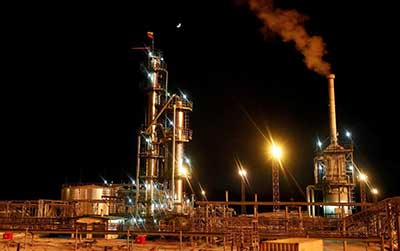Date: 28/11/2022
Relevance: GS-2: Effect of Policies and Politics of Developed and Developing Countries on India’s interests, Indian Diaspora.
Key Phrases: Group of seven advanced economies (G7), price cap on oil exports from Russia, European Union, inclusive energy transition, tighter sanctions, strategic autonomy, fixed dollar-per-barrel cap.
Why in news?
- The group of seven advanced economies (G7) had agreed to the implementation of a price cap on oil exports from Russia to limit its largest source of income.
Why a price cap is being introduced?
- The G7, including the United States, as well as the whole of the European Union and Australia, are planning to implement the price cap on sea-borne exports of Russian oil on December 5.
- The cap is intended to cut Russia's oil revenues while keeping Russian crude on the market by denying insurance, maritime services, and finance provided by the Western allies for tanker cargoes priced above a fixed dollar-per-barrel cap.
- A historical Russian Urals crude average of $63-64 a barrel could form an upper limit.
- The cap is a concept promoted by the United States since the EU first laid out plans in May for an embargo on Russian oil to punish Moscow for its invasion of Ukraine.
- Insurance:
- Insurance companies and other firms needed to ship oil would only be able to deal with Russian crude if the oil is priced at or below the cap.
- Most of the insurers are located in the EU or the United Kingdom and could be required to participate in the cap.
- Without insurance, tanker owners may be reluctant to take on Russian oil and face obstacles in delivering it.
Whaṣt will be the price cap?
- G7 and European Union diplomats have been discussing a price cap on Russian oil of between $65 and $70 a barrel, but an agreement has still not been reached.
- Split in opinions:
- The European Union governments remained split over what level to cap Russian oil prices at to curb Moscow's ability to pay for its war in Ukraine without causing a global oil supply shock.
- A higher price cap could make it attractive for Russia to continue to sell its oil, reducing the risk of a supply shortage in global oil markets.
- Poland wants the cap to be set at $30, arguing that with Russian production costs that some estimate at $20 per barrel, the G7 proposal would allow Moscow too much profit.
Russia’s stand:
- Moscow responded by saying that it would stop selling oil to countries that impose a price cap on Russian oil, destabilizing global oil markets.
How will the price cap impact India?
- According to some reports, some refiners in India are paying the equivalent of a discount of around $25 to $35 a barrel to international benchmark Brent crude for Russian Urals crude.
- With Brent trading at around $86 a barrel recently, that would imply a price of $50-$60 a barrel of Urals, which is below the cap.
- Indian refiners typically pay for crude to be delivered to them, including insurance and freight. Even for delivered Urals crude, India is paying $15-$20 a barrel below Brent. That means even the delivered cargoes are about the same level as the price cap.
- Hence, Indian refiners are already getting Russian oil at below or near price cap levels. So, as and when the price caps are imposed it is unlikely to have any negative impact on India's oil imports.
Diversified sources
- Even though India has benefited tremendously from Russian oil imports, in recent months the profits squeezed due to Moscow limiting discounts, tighter sanctions kicking in, and refiners lifting more term supplies.
- India is now turning to Africa and the Middle East instead of Russia due to higher freight rates.
- To secure supplies, India has signed oil import deals and contracts with countries such as Brazil Colombia, the USA, etc.
India’s Inclusive energy transition:
- India’s energy security is important for global growth, as it is the world’s fastest-growing economy.
- The world must not promote any restrictions on the supply of energy and stability in the energy market should be ensured.
- India is committed to clean energy and the environment. By 2030, half of our electricity will be generated from renewable sources.
- Time-bound and affordable finance and sustainable supply of technology to developing countries are essential for the inclusive energy transition.
Conclusion:
- India values its strategic autonomy in pursuing its national interests, particularly its economic and security objectives.
- India has always tried to defend its core interests but does it more fiercely now. In the current situation, crude oil imports were clearly a core interest.
- India is an energy consumer, with 85 percent of its needs dependent on imports. Therefore, India needs to walk a tightrope in terms of aligning its own interests and having a good rapport with the West.
Source: The Hindu BL
Mains Question:
Q. What is the G7 countries' price cap on Russian oil, and what impact will it have on the world in general and India in particular?








